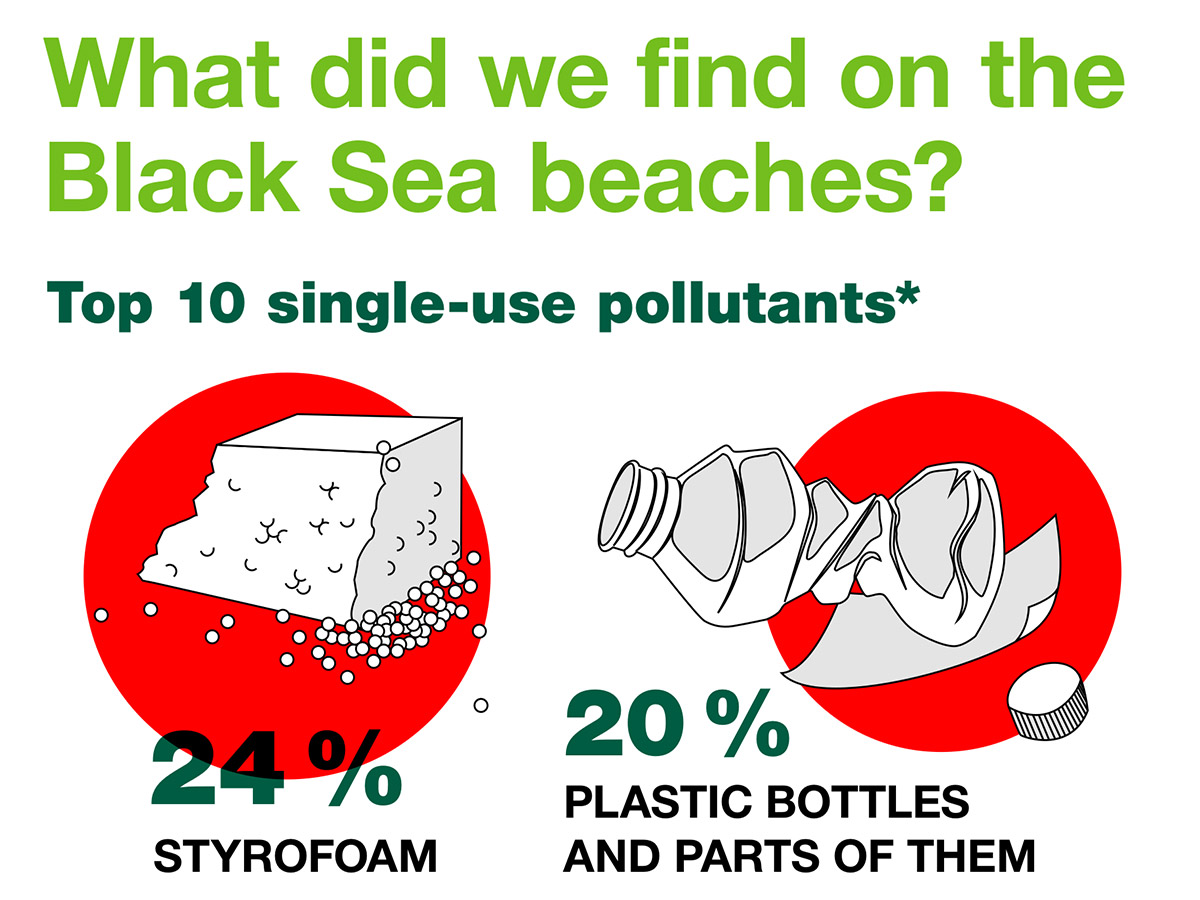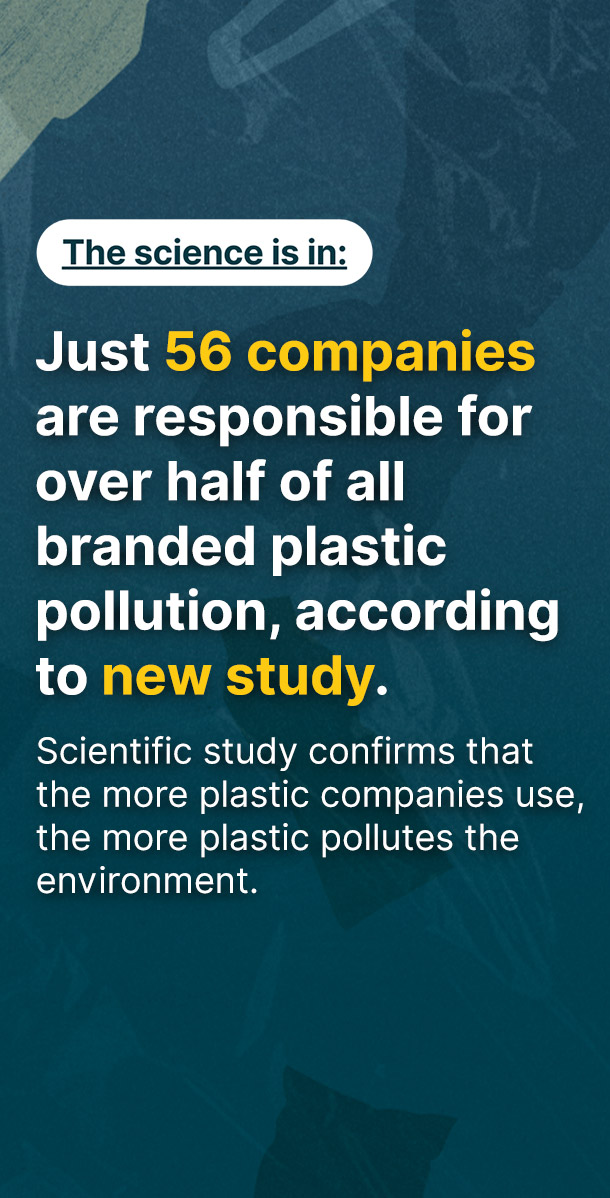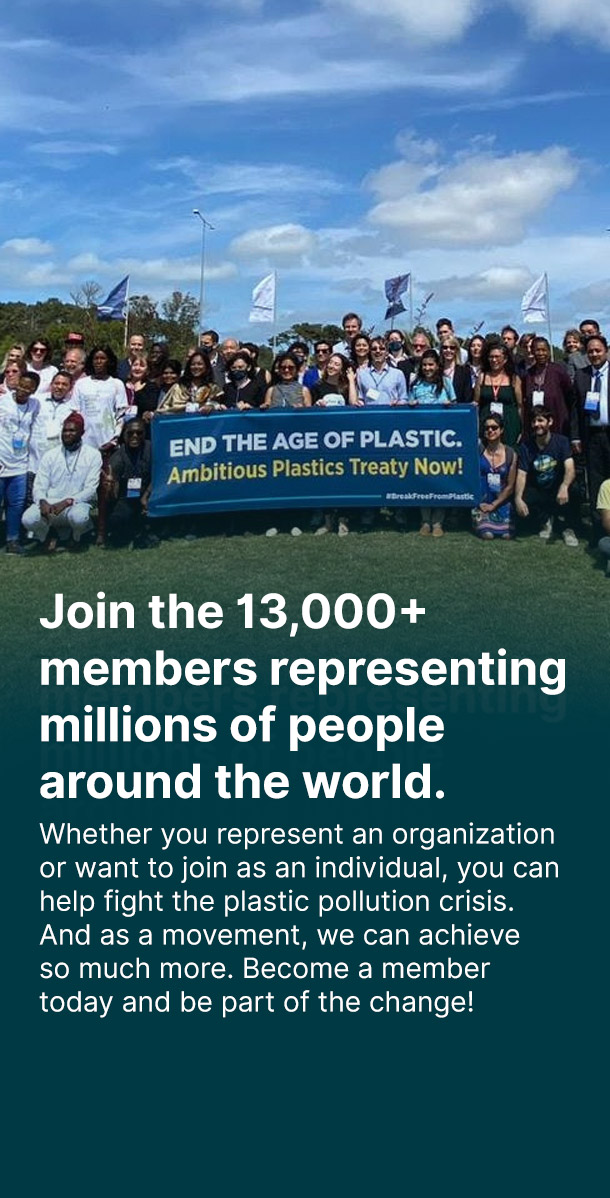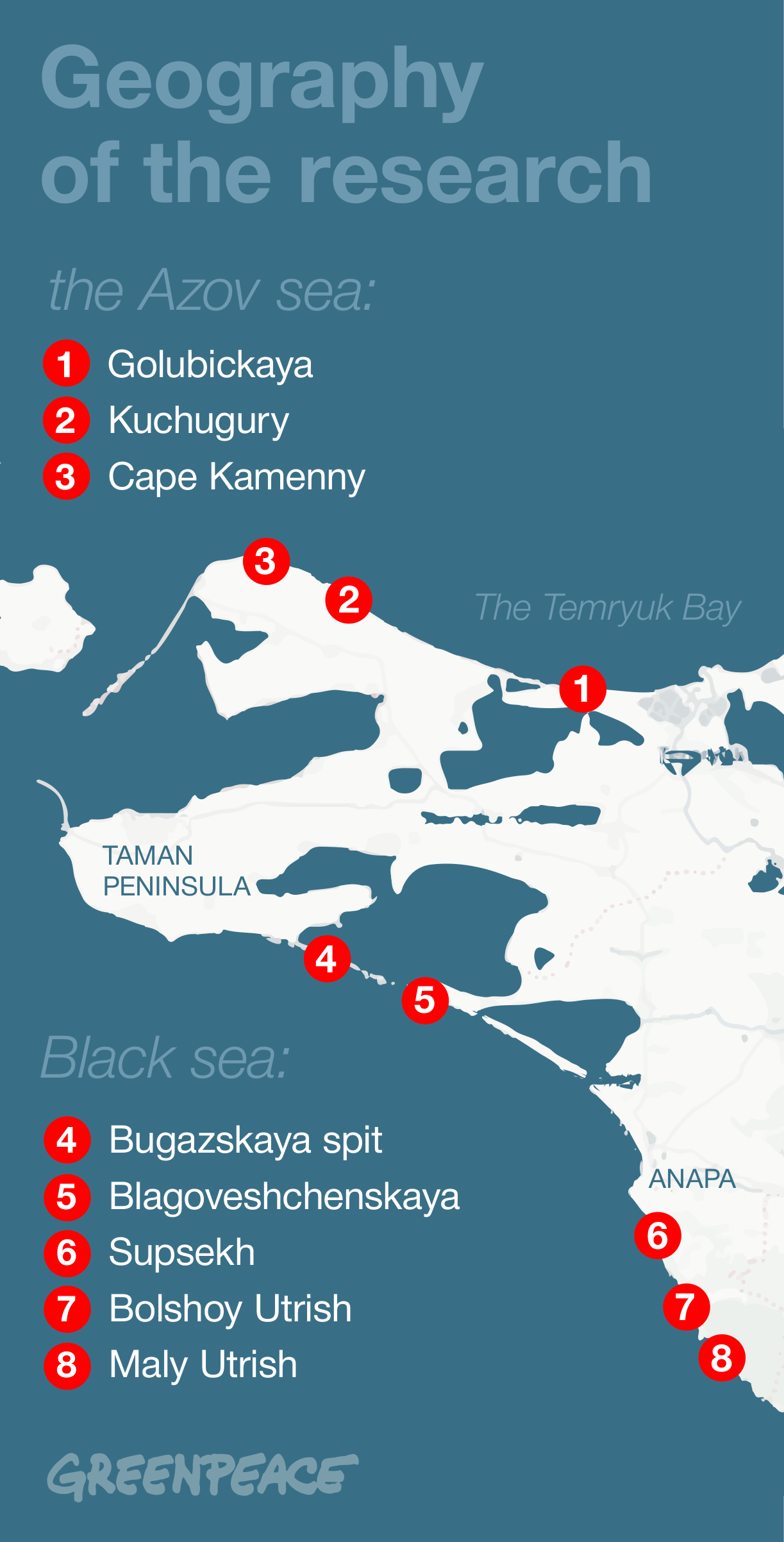
The main sources of pollution are tourists, waste from other countries brought by currents, and maritime shipping.
Most of the plastic found is determined to be single-use packaging or goods. In the Black Sea, the share of such plastic is almost 68%, on the Azov Sea - up to 90%. The main pollutant of the latter was bottles, and the Black Sea coast was filled with styrofoam.
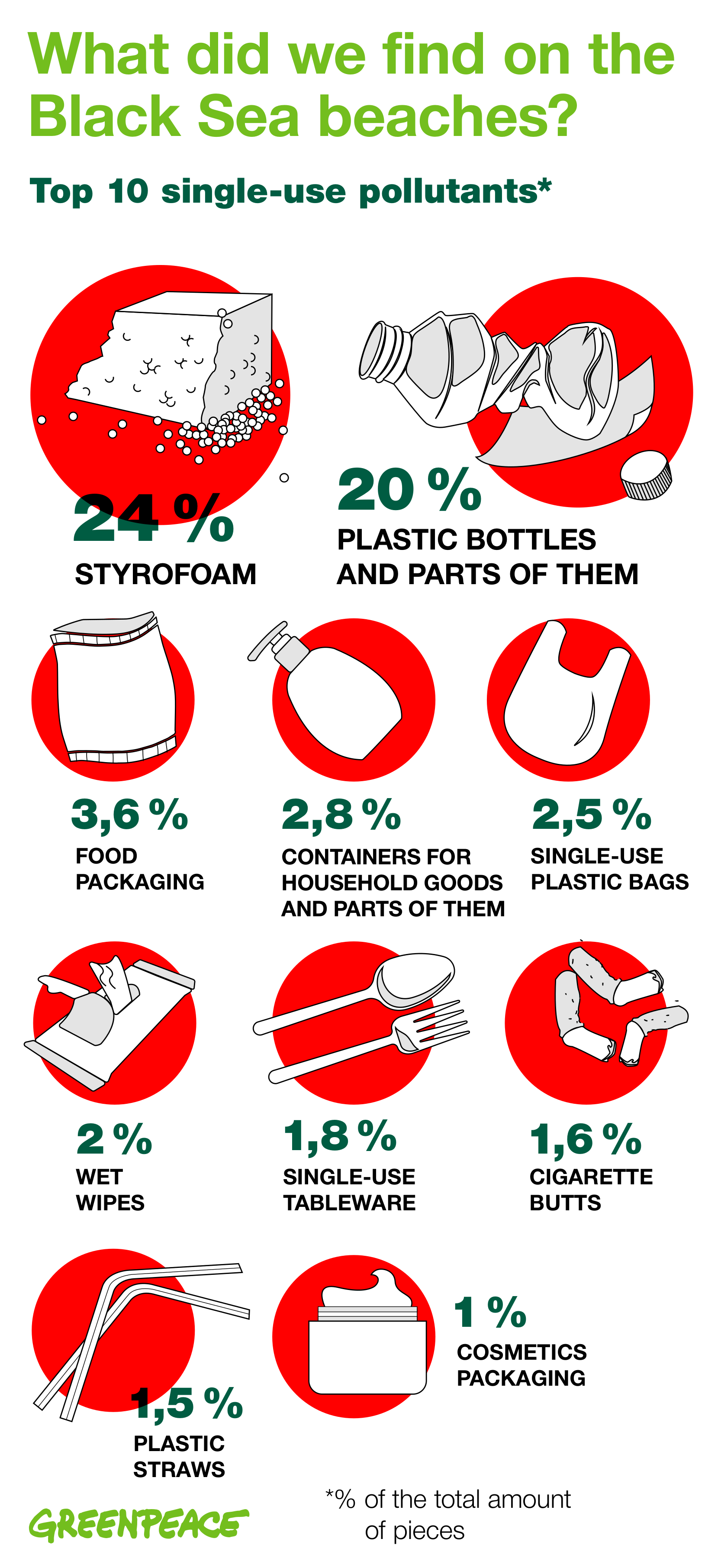
“We have now witnessed that plastic pollution is a real problem for the Black and Azov seas. On the hundred-meter sections of the coast, we found from 435 to 3,501 pieces of plastic. Even the borders of the Utrish nature reserve are littered. We found 1,001 plastic pieces in one monitored area and 2,991 pieces in the other. This is mainly one-off goods, packaging and bags that are all trash we can consciously avoid. Today in Russia there is no regulations over plastic pollution of the environment. There are no holistic measures to prevent it. Greenpeace urges the Government of the Russian Federation to develop a national system for monitoring plastic contamination and approve a list of single-use goods, containers and packaging that should be banned step by step. We cannot resolve this issue otherwise,” says Alexander Ivannikov, an expert at the Zero Waste project of Greenpeace Russia.
Interestingly, the more difficult it was for people to have access to an area, the higher its level of plastic contamination was. This may be due to the fact that such areas are less likely to be cleaned, while debris is still washed ashore.
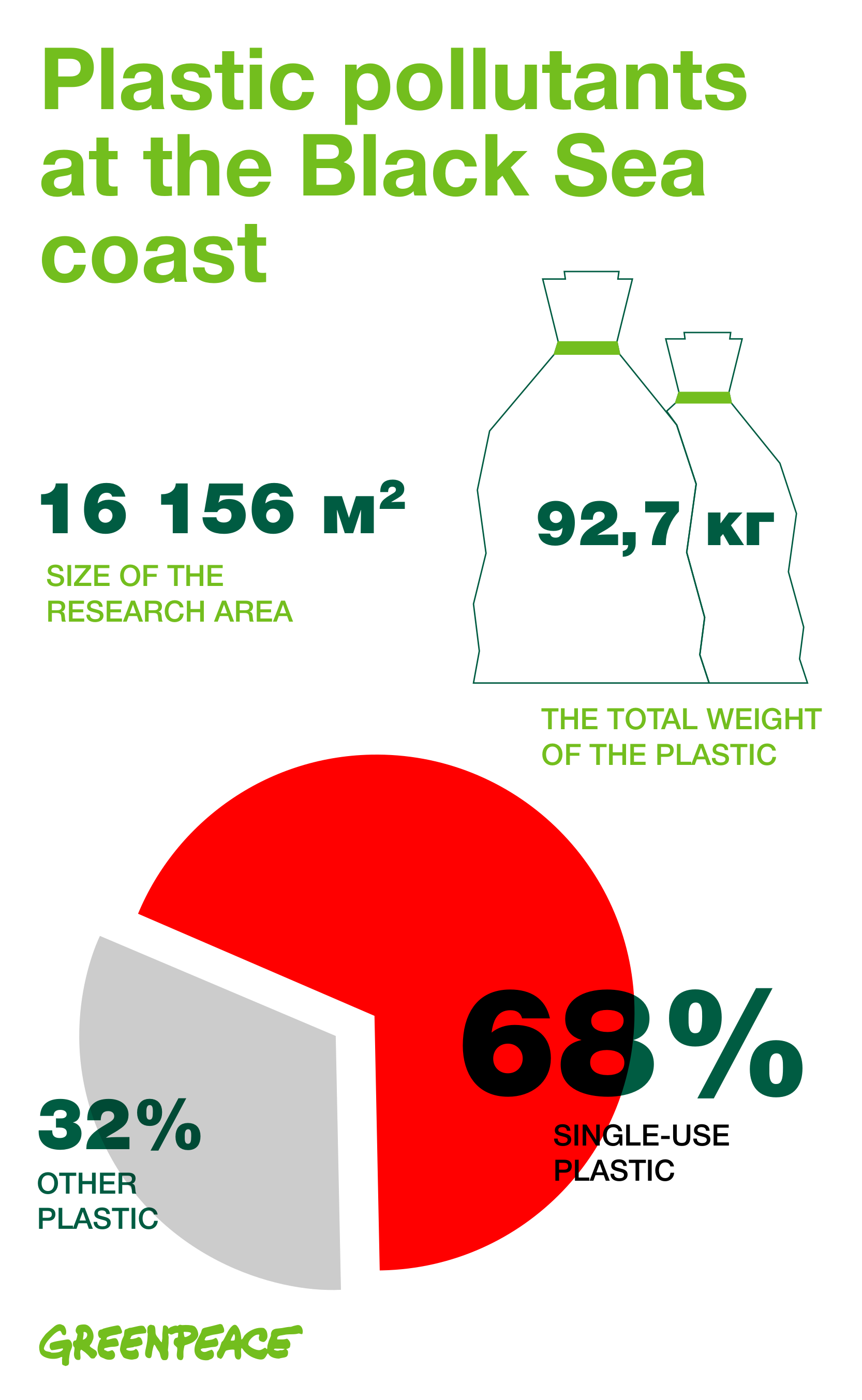
Single-use plastic items pollute the environment, decompose for hundreds of years and harm animals. Sea inhabitants and birds often become its victims, mistaking pieces of plastic for food or getting entangled in them. According to the British government, plastic ends up in stomachs of 31 species of marine mammals and 100 species of seabirds.
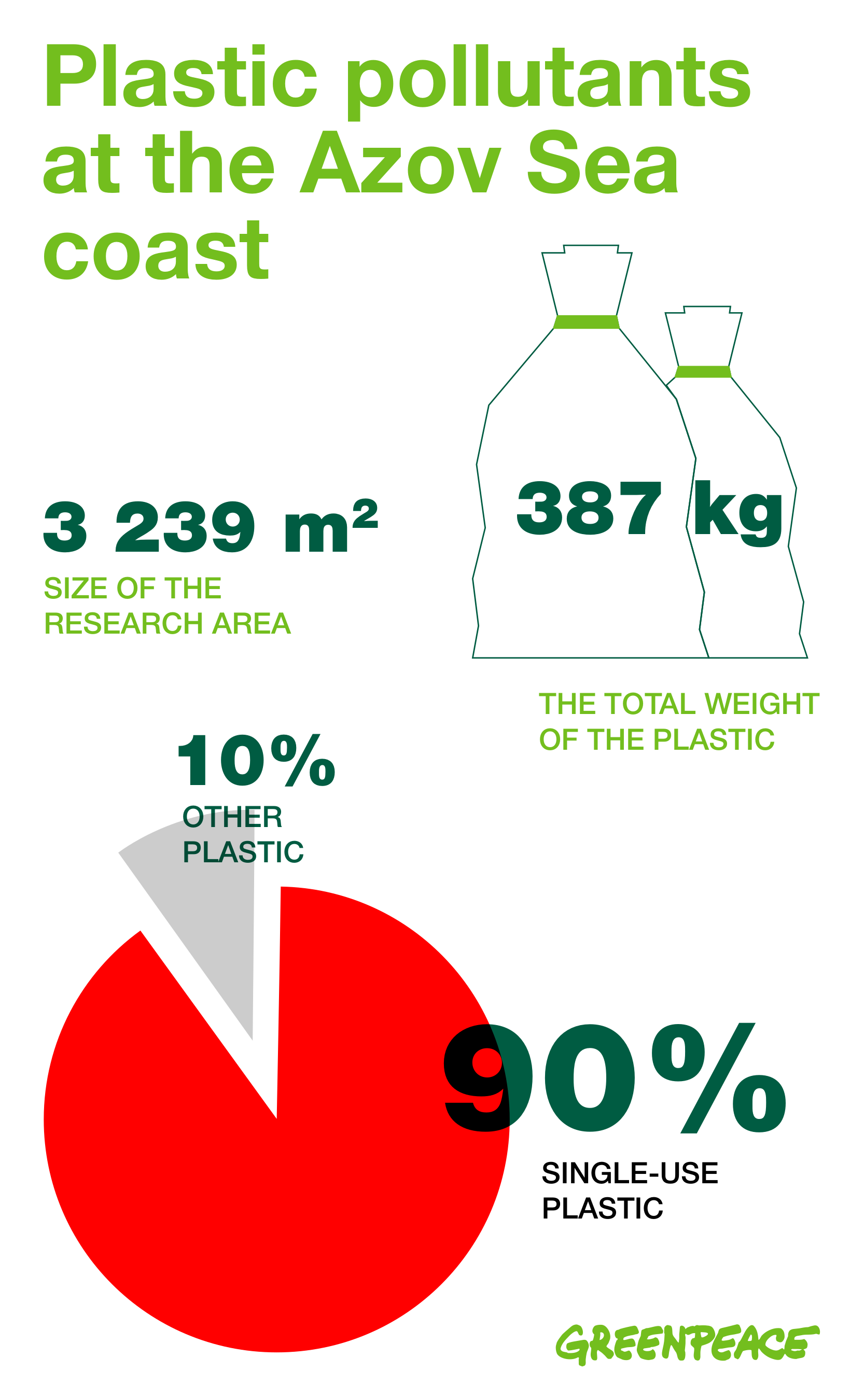
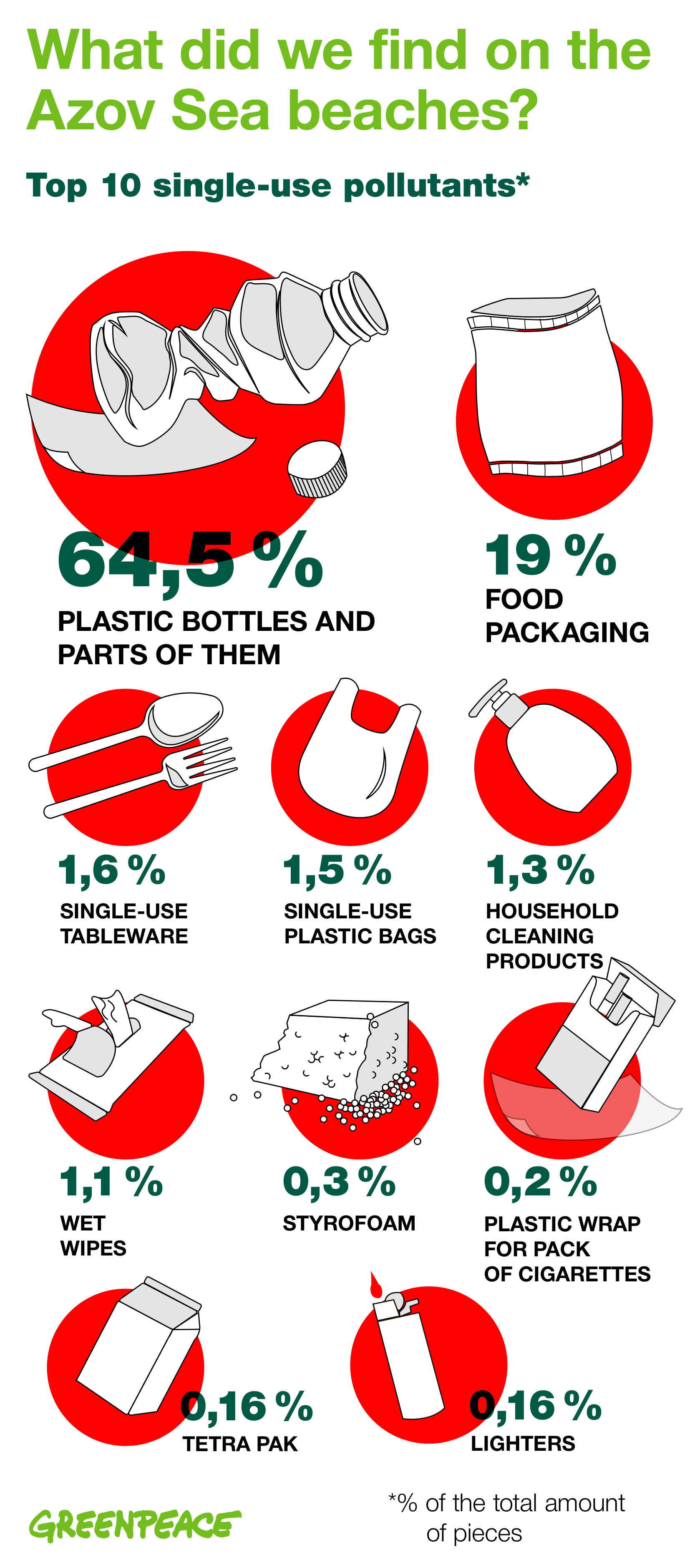
On the method
During the expedition, Greenpeace experts used the methodology for monitoring marine debris on the beaches, which was developed by the DeFishGear project. The data collected was one of the reasons for the European Commission to ban certain types of plastic products.
According to the methodology, Greenpeace experts chose hundred-meter areas (polygons): 5 - on the Black Sea coast and 3 - on the Sea of Azov. From the surface of polygons, visually distinguishable fragments of plastic were collected, their number was counted, they were weighed and sorted by purpose / type of product.

